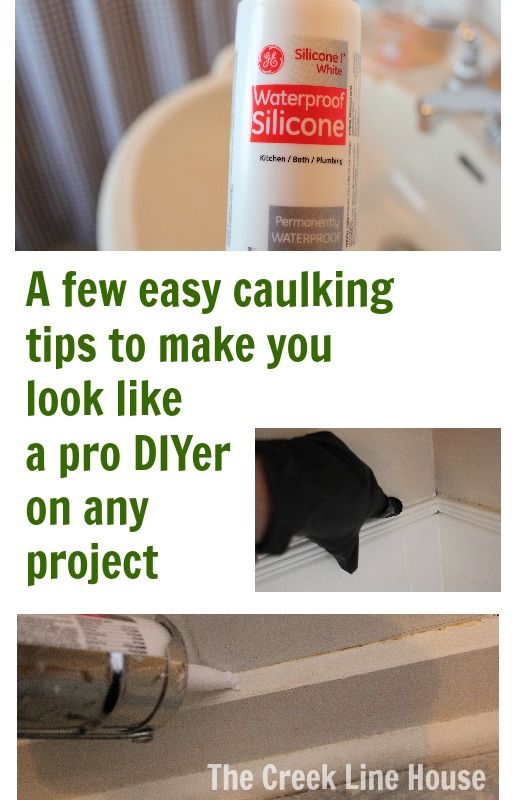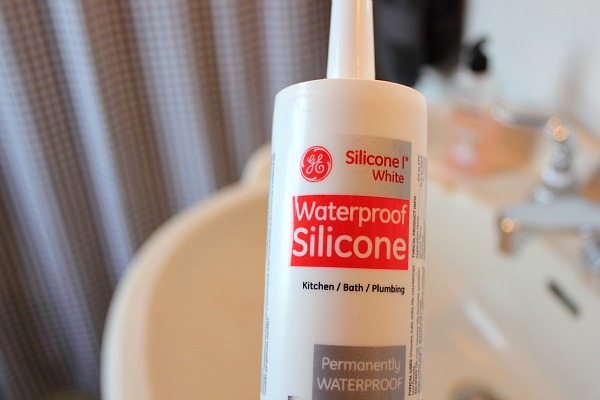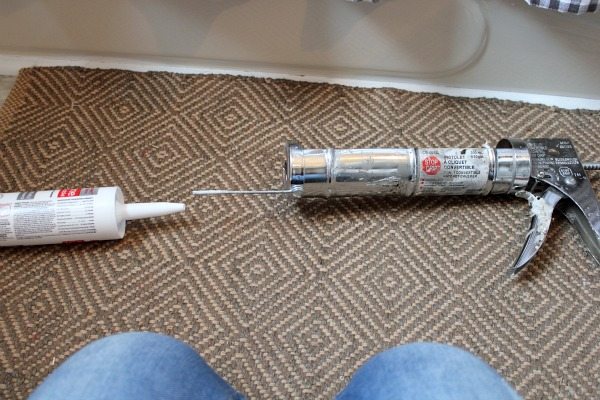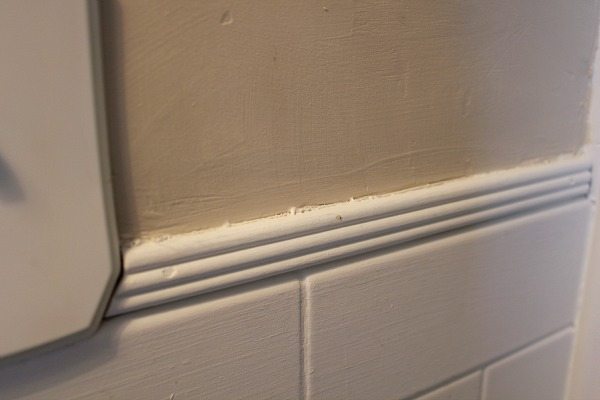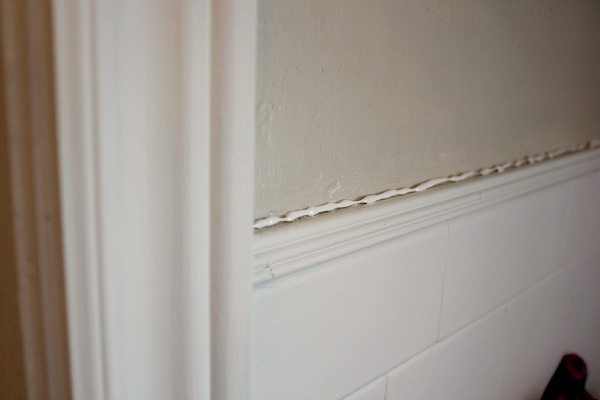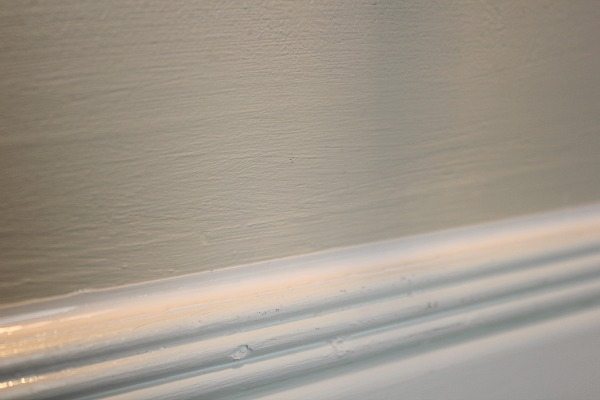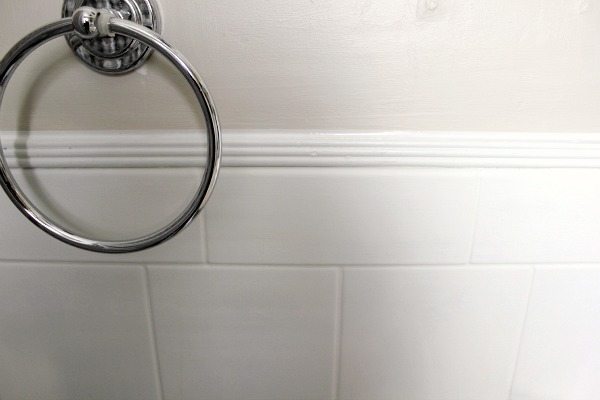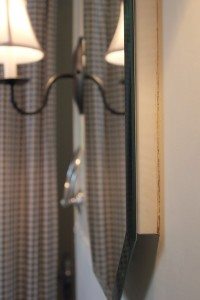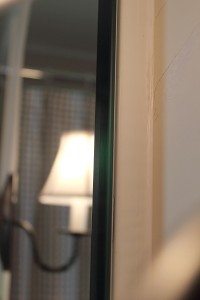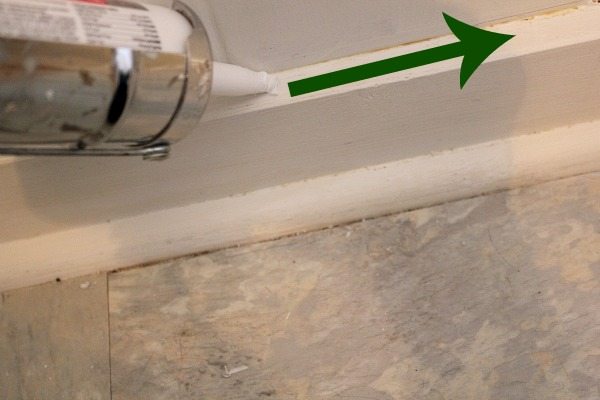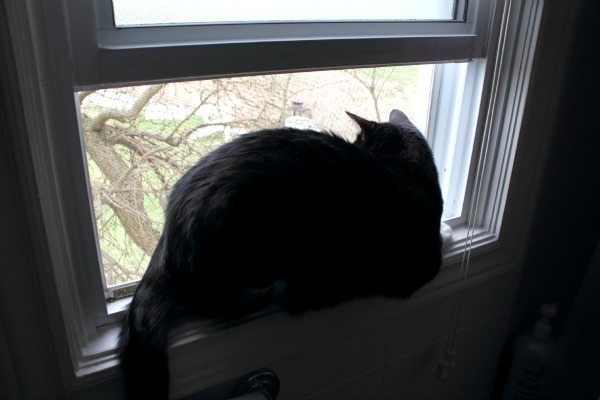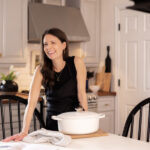
I’ve been working on a really quick little bathroom update for the last month or so, and of course, like on any project, there were lots of little imperfections. I learned a long time ago that caulking is your best friend for filling gaps and covering up mistakes, especially in an old house like ours where nothing is square. I thought I knew what I was doing when I started, but I found quite a few little things that made the job easier and look a lot better in the end. So I thought I’d share!
First of all, there are two ways that you can do your caulking: before painting and finishing, and afterwards. Since I’d already done my painting and was just trying to cover up the yucky bits, I chose this silicone because I liked how it said “permanently WATERPROOF”. That’s gotta be a good thing, right? The only thing with this type is that it’s super slick and shiny when it dries and doesn’t do very well if you try to paint over it. For this though, it was perfect.
The first time I tried to use caulking, I cut the little tip off and then couldn’t figure out why I couldn’t get it to work. Turns out there’s also a little membrane inside that you need to pierce. There should be a little piercer sword that swings out of the bottom of your caulking gun for that. P.S. Isn’t my new bath mat neat?
So here’s a little look at some of the “before” shots. I had to remove a whole lot of wallpaper and little bits were left on the edge of the tile there. Also these old walls are in pretty rough shape, but they won’t be replaced until “bathroom reno 2.0” happens, so I thought I’d just try to make the whole thing look more presentable by covering up what I could.
Not nice. We’ve got to make this better. But how?
This is what I usually do when I do caulking. I lay down a thin bead and then use my finger to smoosh it until it’s smooth.
Two things are wrong with this: 1) If you read the tube, you’re not supposed to actually touch the caulking with your bare skin. Oops. I got a latex mechanic’s glove that I found in my stash of tools. This made it pretty hard actually cause the glove was way too big. I usually have smaller gloves around, but I ran out, so I ended up using my finger anyway. Bad me.
The other thing wrong with this approach (2) is that it didn’t end up looking so great for an after paint job kind of finish. Especially not when you’re on the boarder of two different colors. There was kind of a lightly blended shiny white line instead of a nice crisp clean line. But I learned!
I took the same approach as I usually take when I do something like a bath tub and I taped off where I wanted my line to end. Then I put down the bead of caulking (sometimes, I put a bit too much, obviously) and smoothed it out. If you’re looking for a really good explanation of how to caulk a bathtub, by the way, my friend Ann did a great post on that a couple of weeks ago. I do it almost the exact same way.
Now that’s more what I was looking for! All those little bumpy bits have totally disappeared!
A lot of people only think of using caulking on things like bath tubs, sinks, and windows, but you really can use it on just about any DIY home project to get a nice perfectly finished look. Here’s where my mirror meets the wall. It was just looking not so clean and newly refreshed.
You’re just getting all kinds of sneak peeks of this bathroom today now aren’t you?
Here’s after I did the caulking and tape thing:
Okay, I ripped a little of the paint off along with the tape. Oops again! Easily fixable though when I go through and do my last few touch ups.
One last little revelation I had: When you’re laying down your bead of caulking, you want to move in the same direction as you’re squirting with your gun. So that means that as you squirt a little out, you immediately smooth it over with the tip of the gun. It sounds counter-intuitive, but it really makes for a lot less waste and a lot less mess. I’ve always felt like I should put down a perfect bead and then smooth it after, but there’s not need! It makes for a lot less unhealthy finger smoothing afterwards too.
Don’t forget to open a window as well while the caulking is curing! This was a new one for me too, I have to admit. Oh the things you learn when you actually read the packaging, right?
Courtenay Hartford is the author of creeklinehouse.com, a blog based on her adventures renovating a 120-year-old farmhouse in rural Ontario, Canada. On her blog, Courtenay shares interior design tips based on her own farmhouse and her work as founder and stylist of the interior photography firm Art & Spaces. She also writes about her farmhouse garden, plant-based recipes, family travel, and homekeeping best practices. Courtenay is the author of the book The Cleaning Ninja and has been featured in numerous magazines including Country Sampler Farmhouse Style, Better Homes and Gardens, Parents Magazine, Real Simple, and Our Homes.
